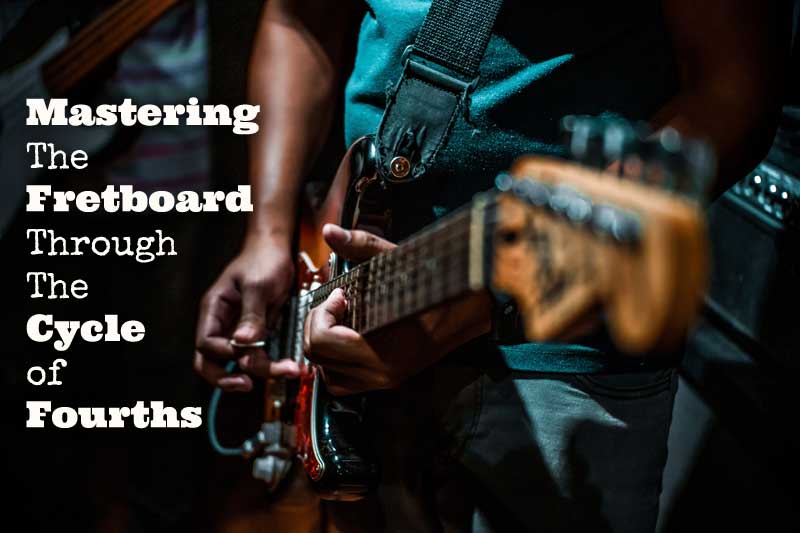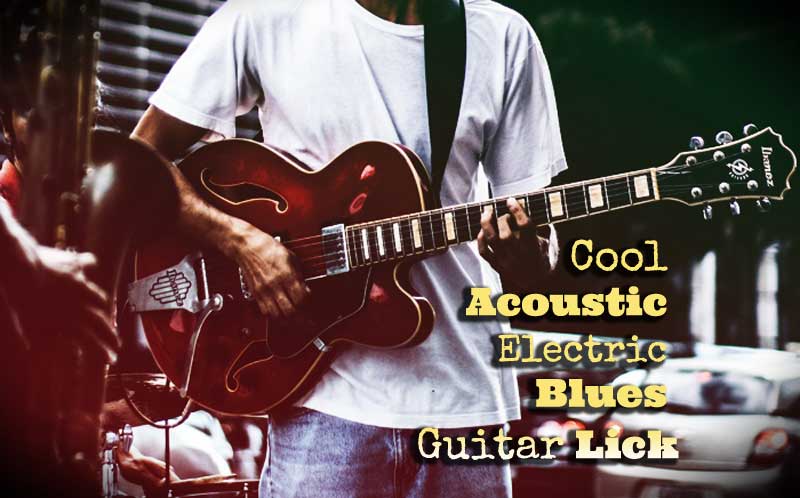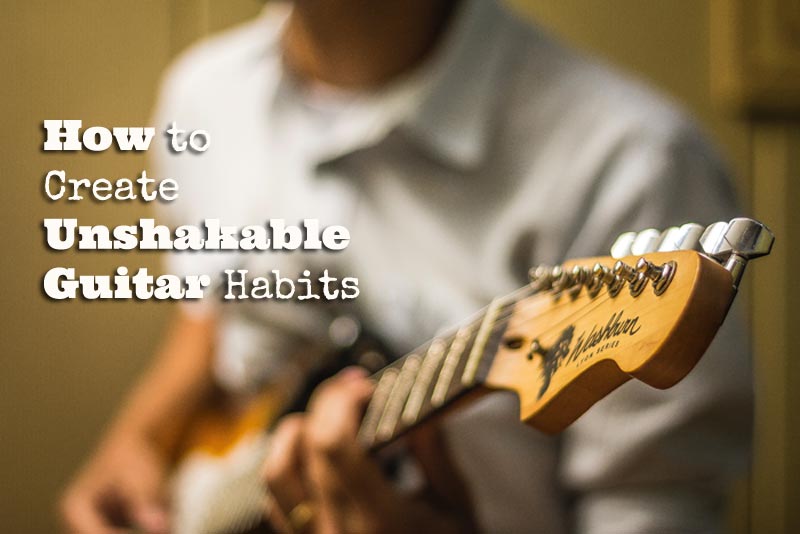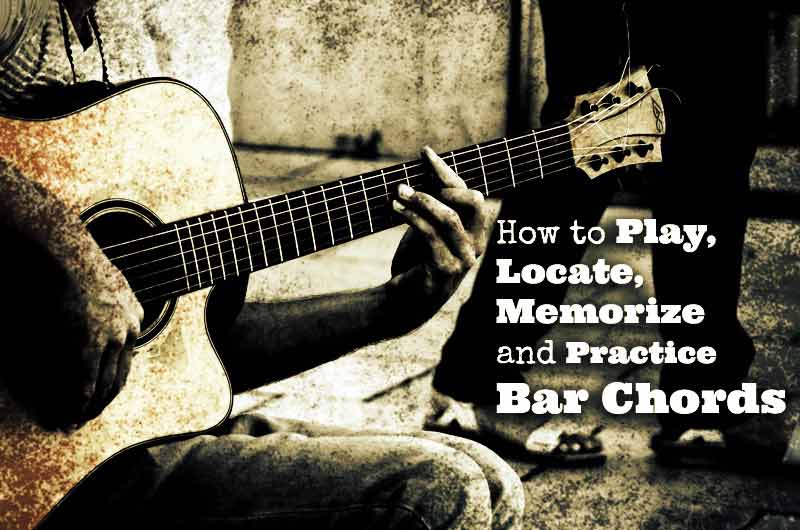
Once you know how to play bar chords, the next step is to learn how to instantly find, recognize and play every bar chord type all over the neck.
For that to happen you first have to locate, memorize and practice the four essential bar chord shapes (E major, E minor, A major and A minor) all over the fretboard in the most effective way.
- The E major shape bar chord indicates a barre (first finger) with an E major (shape) chord played with your 2nd, 3rd and 4th finger.
- The E minor shape bar chord indicates a barre with an E minor (shape) chord played with your 3rd and 4th finger.
- The A major shape bar chord indicates a barre with an A major (shape) chord played with your 2nd, 3rd and 4th finger.
- The A minor shape bar chord indicates a barre with an A minor(shape) chord played with your 2nd, 3rd and 4th finger. See diagrams below:
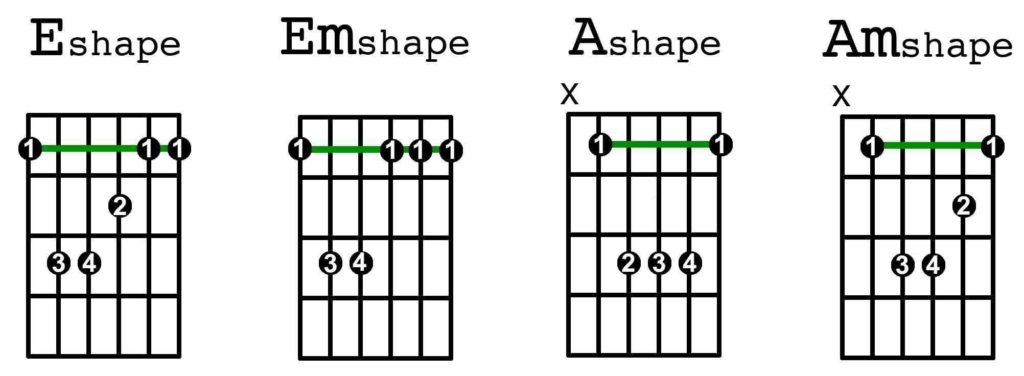
Major Bar Chords (E Major shape)
To find and recognize the names for all the E major shape bar chords you only have to memorize the natural notes on the low E-string, so no sharps (#) or flats (b). (See the neck diagram below).
Memorize the frets and their natural notes:
|1st fret = F | 3rd fr = G | 5 fr = A | 7 fr = B | 8 fr = C |10 fr = D |12 fr = E |

These are 7 natural notes and on each fret starts a bar chord with the same name. For example, when you play an E shape bar chord starting on the 3rd fret where the G note is located on the Low E-string, your chord also is called G major. When you play the E shape bar chord on the 8th fret you’re chord is now called a C major chord and so on. See diagrams below (The chord shape moves up and the chord name changes with it).

